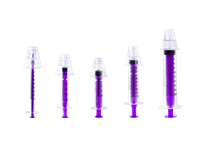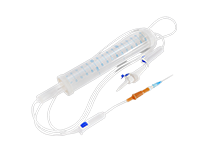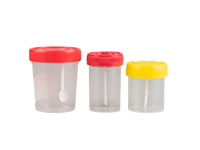News Categories
Disposable syringes

Disposable syringes
Safety Syringes/ Auto-Disable Syringes
Safety Syringes/ Auto-Disable Syringes
Oral/Enteral Syringes

Oral/Enteral Syringes
Infusion Sets

Infusion Sets
Urine Bags

Urine Bags
Urine Cups

Urine Cups
Cause
Vibrio cholerae infection is the root cause of cholera. After entering the intestinal tract with contaminated water or food, Vibrio cholerae passes through the mucus layer on the intestinal mucosa
and adheres to the intestinal mucosal epithelial cells in the upper part of the small intestine. While rapidly multiplying, it produces cholera enterotoxin (also known as cholera progenitor). Cholera
enterotoxin is the main substance that causes cholera symptoms. It stimulates the excessive secretion of water, chloride and bicarbonate by the crypt cells of the intestinal mucosa, and at the
same time inhibits the normal absorption of sodium by the intestinal villi cells, resulting in the accumulation of a large amount of water and electrolytes in the intestinal lumen, resulting in the
severe watery diarrhea characteristic of this disease.
Way for spreading
The main route of transmission of cholera is the fecal-oral route, that is, Vibrio cholerae is excreted from the infected person's feces to contaminate the environment, and then others eat or
drink contaminated water or food, or contact the source of contamination to contaminate their hands with the virus, resulting in " cholera from the mouth".
Typical cholera symptoms include:
Diarrhea: frequent defecation, up to dozens of times a day, yellow watery stool or "rice swill" stool, no fever, no abdominal pain, and a light feeling after defecation;
Vomiting: usually occurs after diarrhea, mostly in the form of jets. The vomit is initially stomach contents, and then watery, and in severe cases, it can be a "rice swill"-like liquid
The following symptoms of water and electrolyte disturbances can occur after frequent diarrhea and vomiting:
Dehydration: dry skin, poor elasticity, hoarse voice, and in severe cases, a "cholera face" with sunken eye sockets, deep cheeks, and indifference;
Muscle cramps: Low sodium caused by massive sodium loss can cause gastrocnemius (calf) and rectus abdominis (abdomen) muscle spasms, known as "cramps";
Hypokalemia: frequent diarrhea leads to potassium loss, hypokalemia can cause decreased muscle tone, weakened or disappeared tendon reflexes, bloating and even arrhythmia;
Acidosis: manifested as increased breathing. In severe cases, in addition to deep breathing, there may be disturbances of consciousness, such as drowsiness, insensitivity or even coma;
Circulatory failure: Hypovolemic shock occurs after severe dehydration, manifested as cold limbs, weak pulse, and drop in blood pressure. In severe cases, there may be disturbance of
consciousness, from restlessness to sluggishness, lethargy, and even coma.
According to the severity of clinical manifestations, cholera is divided into the following types:
Light: The number of bowel movements per day is less than 10 times, the degree of dehydration is less than 5% of the body weight, the skin is slightly dry and less elastic, the urine output
is slightly reduced, but the consciousness is still clear, there are no symptoms of muscle spasms, and the pulse and blood pressure are normal;
Medium type: The number of stools per day is 10~20 times, the degree of dehydration is about 5%~10% of body weight, the skin is dry and poor elasticity, oliguria, the patient with this type
is restless or sluggish, has symptoms of muscle spasm, and has a slight pulse. Thin and fast, systolic blood pressure 70~90mmHg;
Severe: more than 20 times of bowel movements per day, dehydration degree greater than 10% of body weight, loss of skin elasticity, no urine, patients with this type are irritable or even
coma, frequent muscle spasms, thin and fast pulse or even inability to feel pulse, contraction pressure below 70mmHg.
Other symptoms
"Dry cholera" is a rare type of toxic cholera with rapid onset and rapid development. It progresses to toxic shock and death without obvious symptoms of diarrhea and vomiting.
May cause other complications
Acute renal failure: severe vomiting and diarrhea can lead to dehydration, and oliguria may occur. If it is not corrected in time, it may be due to insufficient blood supply to the kidneys,
ischemic necrosis of the renal tubules, and even uremia in severe cases.
Acute pulmonary edema: If you do not pay attention to correcting acidosis during treatment, and only add a large amount of alkali-free liquid, it is easy to cause pulmonary hypertension
and acute pulmonary edema.
Prevention
1.Vaccination: For high-risk groups in endemic areas, oral cholera vaccine can be used for preventive immunization.
2.Patients should cooperate with medical staff to take isolation measures to prevent the spread of the epidemic to the surrounding people.
3.Drink clean water and avoid potentially contaminated food.
4.Maintain environmental hygiene and eliminate flies and other vectors.

Quick Response within 24 hours!
Tel: (+)86-519-88168398
WhatsApp: +86-13961432323
Email: sale01@lelun.com
HengShanQiao Town, out of East Gate, Changzhou ,Jiangsu, China
Changzhou Medical Appliances General Factory Co., Ltd. was built in 1988, it is a modern factory specialized in producing the disposable medical appliances in China. The factory is only 1km to Hengshan entrance of Huning high-speed road and is about 20 miles to Changzhou airport. So the traffic is convenience.
The area of the factory is 40000㎡, the area of purifying workshop is 7000m, and fixed assets are about 5,000,000USD. Our main products are Disposable infusion sets, Disposable blood transfusion sets, Disposable Sterile syringe sets, latex glove, disposable infusion set, simple oxygen mask, nebulizer mask, urine cup, hernia mesh, urine bag etc. Now we can manufacture more than 200,000,000 sets per year.